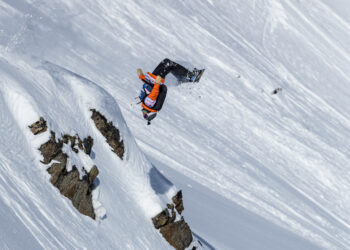By Jessianne Castle EBS ENVIRONMENTAL & OUTDOORS EDITOR
BOZEMAN – Israeli biologists are concerned about the impacts humans have on the genetic structure of Nubian ibex. In Montana’s Glacier National Park, officials are worried about the habituation of mountain goats. As researchers in northern Mexico study the ways desert bighorn sheep use the landscape, their contemporaries in Bozeman are monitoring the movements of Rocky Mountain bighorns in the Madison Mountain range.
On Sept. 10-13, approximately 170 of the world’s leading wildlife biologists gathered in Bozeman, some having traveled for 40 hours to attend the seventh World Mountain Ungulate Conference hosted by the Wild Sheep Foundation.
With presenters from all corners of the globe, the group discussed topics like genetic diversity, migratory patterns and disease as it pertains to the hooved animals that roam our world’s mountains. This includes bighorn sheep and mountain goats, as well as chamois, goral, Sitka deer, ibex, urial, markhor and the wooly tahr.
Kurt Alt, a retired biologist for Montana Fish, Wildlife and Parks and the current conservation director for the Wild Sheep Foundation, oversaw the two-year planning process that brought the international gathering to Bozeman—the first time it’s been held in North America. Thrilled to provide a space where scientists can interact and expand their visions, he said hunter-generated revenue from the Wild Sheep Foundation and Safari Club International helped provide travel stipends for many of the presenters.
Well aware of the need for science-based decision-making, the biologists didn’t shy away from the difficult topics over the course of the four days.
Marco Festa-Bianchet of the Université de Sherbrooke in Quebec pointed to his research on bighorn sheep living on Ram Mountain in Canada, arguing that when hunting regulations allow for unlimited harvest of mountain sheep, hunting can lead to evolutionary changes in horn size. In other words, Festa-Bianchet said certain kinds of hunting can cause sheep to produce smaller horns over time.
On the final day, amid a discussion of sustainable, wise use, Dr. Peregrine Wolff, a wildlife veterinarian for the Nevada Department of Wildlife, stressed the importance of our decisions if we are to conserve wildlife species.
“We are in a time of unprecedented and increasing stressors for all of our wildlife,” she said, citing examples like changes in climate, habitat loss due to urbanization, competition with other domestic ungulate species, changes in predator dynamics and introduced pathogens.
“We’re expecting our wildlife to be able to [change] and they are just being wildlife,” she said. “We need to change. We need to change a lot of our outlook to help them be able to achieve and adapt in a world where we’re expecting them to just do it all by themselves.”
On the final day of presentations, and the day before attendees took a field trip through the Northern Range of Yellowstone National Park, Manzoor Qureshi of the Gilgit Baltistan Rural Support Program in Pakistan shared his experiences in establishing a sport hunting industry within the community of Bunji. He described the need for the community to take on a sense of ownership over the wildlife in order for individuals to care about conservation and preserve critically endangered animals like the markhor or snow leopard, ultimately calling his country’s program “sustainable wise use.”
Shane Mahoney, founder of Conservation Visions, had premised Qureshi’s discussion, setting the stage for the afternoon presentations on sustainable use of wildlife.
“We have to be concerned for conservation mostly because how rapidly things can change,” Mahoney said. “Sustainable use as an approach does not come in one form and it cannot be imposed in a specific place just because some of us who may have been successful would like to see that. It has to arise endogenously within the people, the countries, the cultures who wish to consider it. Then, if we involve the local people, as, if we had involved the Cree, and the Crow and the Arapaho and the Sioux and the Cheyenne, had we involved them, the landscapes of America and the wildlife in America would be quite different today.”















